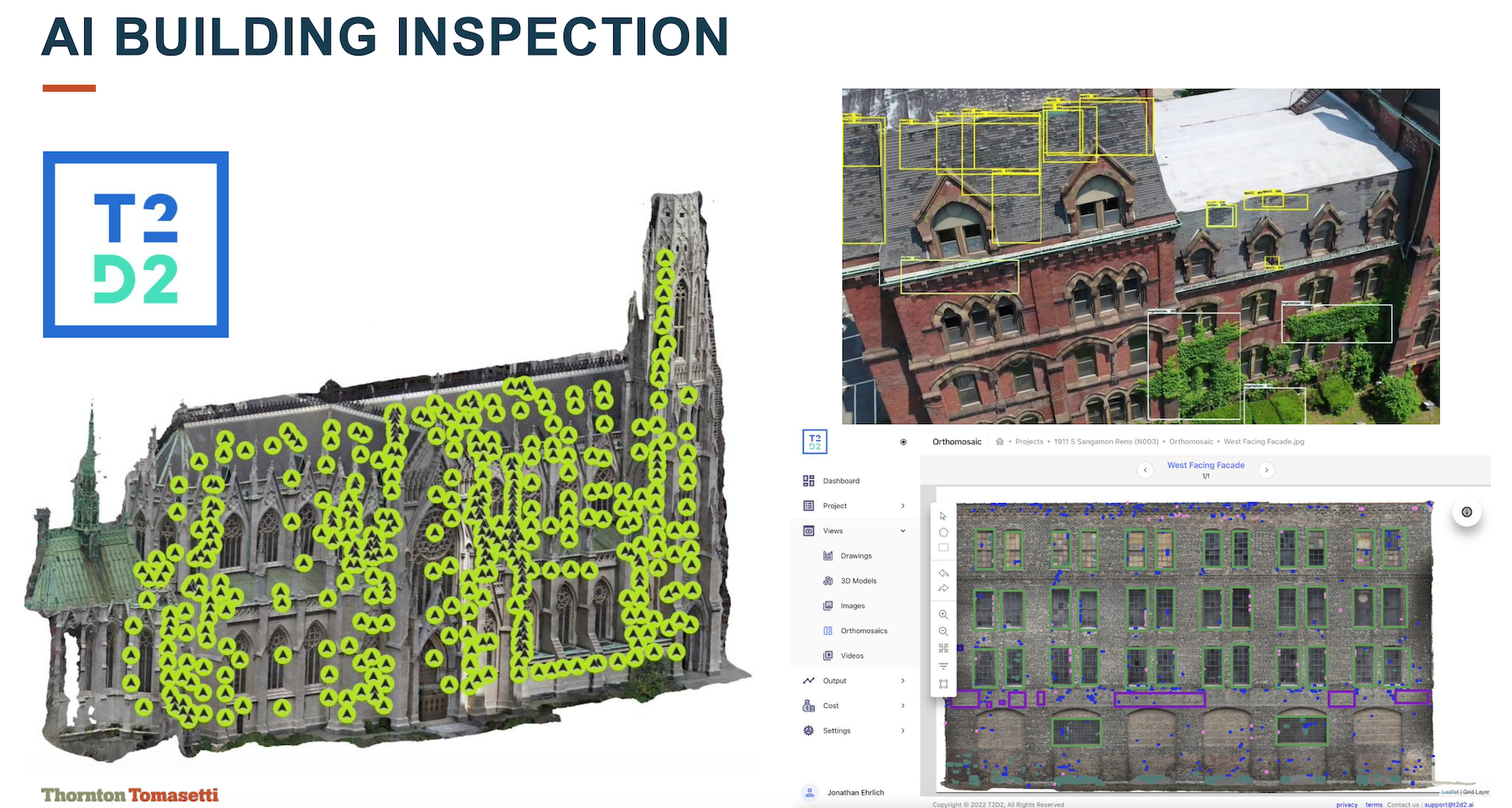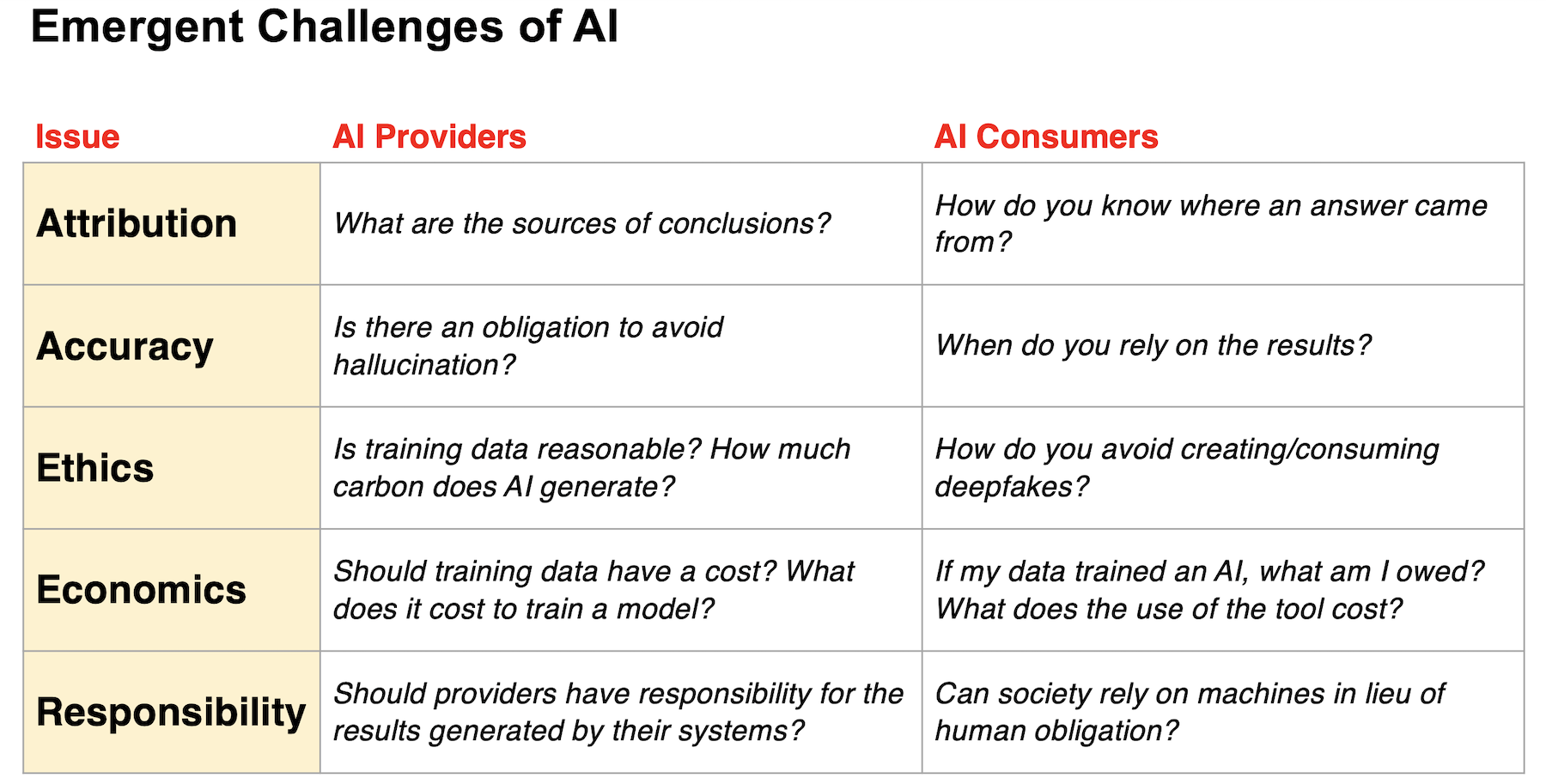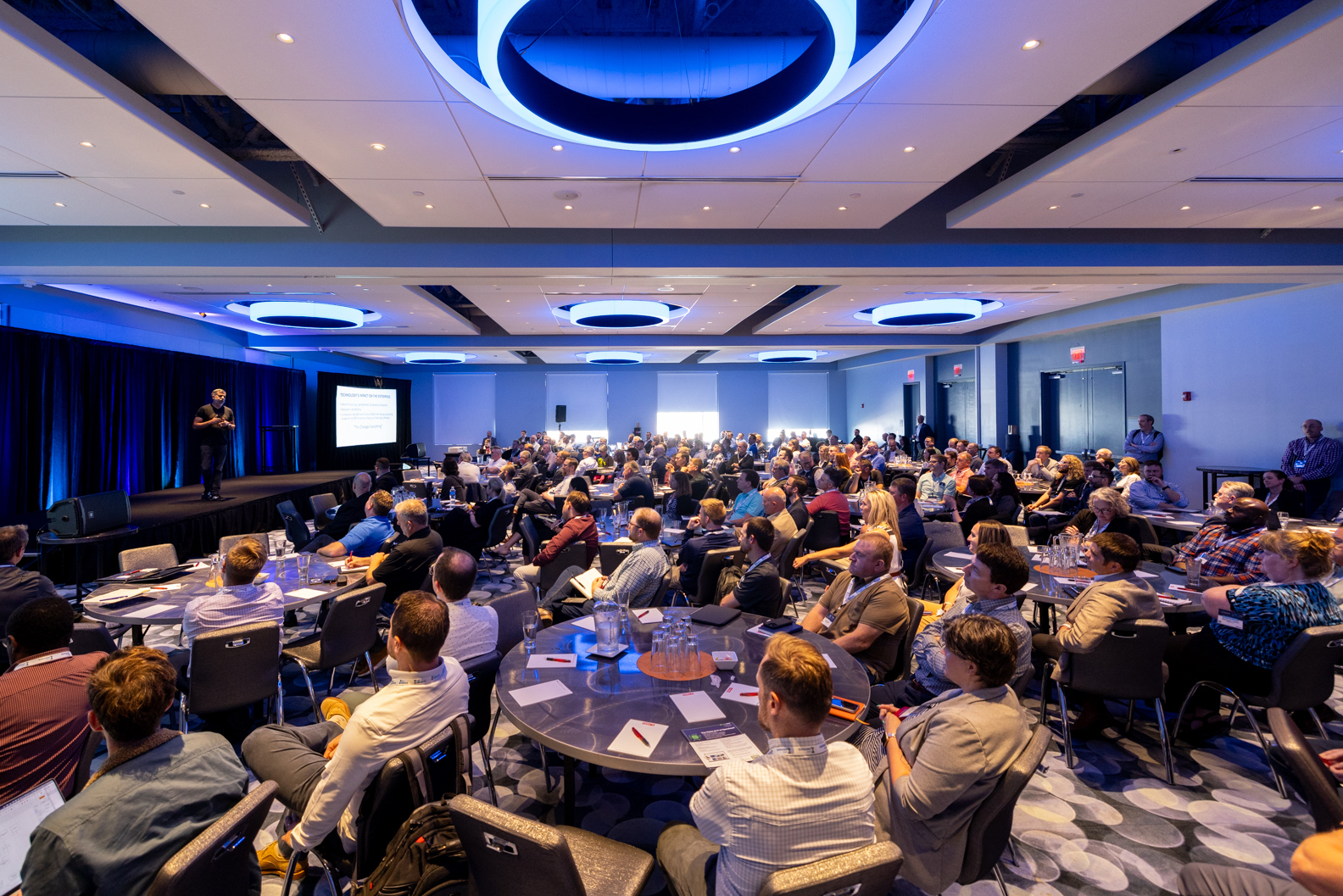The global architecture and design firm HKS has been investigating for several years how artificial intelligence (AI) might advance its design capabilities. In 2023, HKS created a Design Research Lead position for AI. This year, it has been formulating AI guidance policies. Image-generating AI informs the firm’s design sketches. And its data warehouse—which stores financial information that dates back 20 years and project info from the past half decade—can now accept and integrate information from just about any source.
“AI provides us with a new way to discover information,” said Cory Brugger, HKS’s Chief Technology Officer. But HKS still isn’t sure where AI is headed, or how its value proposition will equate to a competitive advantage. “We knew we had to embrace the chaos, but we aren’t convinced yet about the ‘if’ and ‘where’ of AI,” said Brugger.
AEC firms, in fact, should be thinking about AI as if it were a teenager, “imperfect, but with potential, and requiring patience,” said KP Reddy, founder of Shadow Ventures, a seed-stage investment firm.
Reddy, and Brugger (with Heath May, HKS’s Global Practice Director), were among the presenters at the first-annual AEC Innovate conference. Hosted by PSMJ, the event was held last week in Boston and drew 230 executives from AEC firms across the country, a good number of which are already beyond just kicking AI’s tires.
Conference attendees heard predictions about how AI would fundamentally change how they design, build, and operate. But speaker after speaker at the conference also tempered his or her advocacy with caution about AI’s current limitations and risks.
The overriding message at the conference was that AI is evolving rapidly into a useful tool, but it isn’t a panacea, and AEC firms need to be selective in choosing what tools they develop and for what tasks. While its capabilities are advancing at a scary pace, AI is not quite ready for the AEC world’s prime time.
“The tech we use reasons by memorizing the world, not with semantic logic,” said Phillip Bernstein, an Associate Dean and Professor at Yale University’s School of Architecture, and author of Machine Learning: Architecture in the Age of Artificial Intelligence. “Until tech reaches a point when it understands semantic detail, it will be hard to use for architecture.”
Even Autodesk, which has investigating AI for more than a decade—and which in May added to its suite of AI-powered products a generative model called Bernini that produces 3D shapes from 2D images, texts, and point clouds—concedes that “we have a lot of work [to do] before we could go into production” using this technology, said Racel Amour, Autodesk’s Head of Generative AI.

Lots of curiosity and experimenting with artificial intelligence in construction
At this moment in AI’s evolution, the AEC industry is traveling on a “digital journey” that requires continuously adapting to change, said Bret Tushaus, Vice President of Product Management for Deltek, whose software products include Deltek Dela, an AI-powered business companion that generates smart content and automates routine tasks.
Tushaus said this journey is more accessible and satisfying when firms start small, identify use cases, begin with a goal in mind, and harness diverse talent. Tushaus noted that the recent emergence of AI agents, which perform actions autonomously in an intelligent manner, are elevating Generative AI tech to new heights, particularly in the areas of content creation and analysis, and automating workflows.
Another keynote speaker, Mehdi Nourbakhsh, COO of the technology consultant Yega Tech, saw AI agents as the keys to “getting answers” from content and images. “This closes the technology divide,” he exclaimed.
The conference gave attendees the opportunity to gauge their companies’ progress with AI, vis-à-vis other firms. And based on the presentations and conversations with attendees, there’s no lack of curiosity and experimentation.
Last year, the AIA Large Firm Roundtable launched an Innovation Design Consortium, to which 40 of the Roundtable’s 80 firms have committed $2 million. The purpose of IDC is to identify problems that are common to most AEC firms with the goal of jointly coming up with solutions. (There’s been discussions about turning IDC into a subscription model.) One of the visions for IDC is to establish a data-sharing platform that IDC would organize and curate to serve as a data source for AI engines. The challenges to that endeavor include creating “high fidelity” data that, in the process, avoids “hallucinations” of erroneous or made-up information, explained Brad Lukanic, CEO of CannonDesign and an IDC board member.

The impetus behind IDC’s formation, said Peter Devereaux, its chairman and the founding Principal of the global AE firm HED, is the race that AEC firms find themselves in trying to keep up with tech’s trajectory. “The next phase of venture capital is bundling [companies] in ways that are an existential threat to AEC firms,” warned Devereaux, and he’s not exaggerating: AI startups in the U.S., during the months of April through June, raised $56 billion from investors, up 57% from the same period in 2023, according to PitchBook, which tracks startups.
One of the more proactive AEC firms in the AI arena has been the engineering company Thornton Tomasetti, whose research and development division CORE Studio has created AI-powered applications like T2D2, a tool for inspecting a building’s structural integrity. T2D2 was recently used to inspect the Empire State Building, said Alexandra Pollock, AIA, CORE Studio’s Senior Director, who presented at the conference with Seyedomid Sajedi, an AI/Machine Learning engineer. (One of Reddy’s startup investments, Aren, also combines AI and civil engineering for infrastructure damage detection.)
Other products created by Thornton Tomasetti include CORTEX, an AI/ML cloud structure; and Asterisk, which leverages ML for rapid assessment and delivery of structural solutions. During this presentation, Pollock and Sajedi showed an animation of a truss design abetted by Asterisk that was completed 50 times faster than it would have taken manually in 1995, and the new truss created was 5% lighter. They see for AI’s future for AEC in, among other tasks, testing and validating designs, and marshalling institutional knowledge sharing, (Thornton Tomasetti has set up a “community of practice” for AI and a team channel for sharing ideas.)
A bounty of new AI products, with more coming
Other breakout sessions that a BD+C reporter sat in on during the conference were equally informative:
• Frank Lazaro, a veteran executive and inventor, discussed the similarities and differences between Microsoft’s AI personal assistant CoPilot and OpenAI’s CHAT GPT. He said that while CoPilot’s image generation is still “behind the curve,” he has found this tool to be useful for generating marketing pieces and proposals; one of its best features is its ability to create and rewrite copy. Lazaro also pointed out that Microsoft’s strategy is to make CoPilot ubiquitous for any work-related device or platform a user prefers.
• Niknaz Aftani is the founder of aec+tech, which tracks new tech product introductions. Her firm has identified more than 100 AI-powered tools on the market, which aec+tech breaks down into six categories: Planning to Programming (which would include Skema.AI for generative design BIM modeling), Schematic Design (which includes Laiout), Design Development (such as Augmenta for HVAC design), Construction Documents (such as VIM, Blueprints AI, CodeComply.AI, and Upcode), Construction (including the reality-capture tool Open Space), and AI tools developed in house, such as Gensler’s viability tool for converting offices to residential, and DLR Group’s spatial layout tool trained from 200 projects.
• Ohio-based civil engineering firm The Kleingers Group is using AI improve its operational management, said Tim Casto, PE, its CEO and President. His presentation focused on how his firm benefits from using chatbots like CHAT GPT and Claude for such tasks as tracking trends in project manager compensation and profit margins. AI-powered software caught expenses that Kleingers’ accounting department had overlooked. The firm uses chatbots to summarize personnel exit interviews, which led to the company “digging deeper into what went wrong,” said Casto. Kleingers has also downloaded the code ordinances of Milford, Ohio, so it could use GPT to answer code compliance questions.
• The barriers to entry for using AI “have never been lower,” said Justin Webster, Chief Technology Officer for the global AEC firm HDR. “But make sure you understand the capabilities and risks.”
Webster marveled at AI’s capacity to help reduce the time it takes his firm to go from sketches to renderings to less than a minute, from 130 hours without AI that’s been trained on previous projects. HDR has set up an AI task force internally to identify opportunities and challenges. He cautioned that AI’s risks “are real,” and include IP protection, copyright infringement, data loss, the ethical use of data, validating and monitoring data accuracy, and bias detection.
Webster observed that firms thinking about AI’s role in their businesses first need to get their people on board by creating a culture where AI is “safe” to use experimentally, but where people, and not software or machines, are responsible for outcomes. Webster added that AI “is all about the data,” so companies must establish procedures that vet information, and make sure that data access is equitable. Companies need to weigh the pros and cons of whether to buy commercially available AI versus developing software on their own. They also need to establish standards and sharing protocols around data.
For AEC firms that are starting their AI journey, Webster recommended focusing initially on content summarization, semantic searches, content generation, and software development.
Getting past the hype of artificial intelligence

During his presentation, Yega Tech’s Nourbakhsh showed a split-screen video of LinkedIn’s founder Reid Hoffman speaking with a remarkably life-like digital twin of himself whose audio was trained from Hoffman’s speeches, podcasts and books, and created using voice-cloning software provided by Ukraine-based Respeecher.
Sometimes, AI’s potential seems boundless. And this video is an entertaining illustration of AI’s magic. But it also exposes the grandiosity and hype that make every advance in this technology sound like a major breakthrough and showstopper. Indeed, Bernstein, the Yale professor, quipped that a lot of what CHAT GPT is being used for today is “interesting parlor tricks. Using CHAT GPT to write RFPs is a pretty low bar.” The real work, he noted, lies ahead in software development and picking the right projects to apply AI to.
That might be easier said than done when, according to Nourbakhsh, at least 20% of the AEC industry people he speaks with remain skeptical about AI’s functionality for their companies. And Reddy fretted that too many firms are using AI primarily for optimization, which in his estimation “is a race to the bottom” because the solution probably won’t be proprietary and is less likely to provide a big payoff.
Reddy urged AEC firms to focus instead on using AI to boost productivity, specifically gross revenue per employee. He predicted that AI would eventually eliminate the need for middle managers who don’t broaden their skill sets. Employees with creative skills, on the other hand, “are not so easily replicated,” and will be in even greater demand, especially by firms that evolve into what Reddy calls “intangible enterprises” with asymmetric business models, distinct brands, market leadership, infinite delivery services, cultural alchemy, and rapid product development.
AEC firms, suggested several presenters, should not expect instant gratification from AI, whose mature use for the AEC industry is likely to take at least as long as Building Information Modeling did to gain mainstream acceptance. What’s different now, said Nourbakhsh, is that tools exist today which allow AEC firms to create software that's specific to their needs, and, in essence, “to become an AI company.” Nourbakhsh also believed that the future belongs to “subject-matter experts.”
Bernstein said he’s seeing more AI-related activity coming from construction firms than either architecture or engineering firms. He’s also seen hints of AI being able to reason “in 3D ways.”
The greatest use of AI, so far at least, has been for analyzing data and workplace activities, said Bernstein. What AEC firms need to be asking, as they pursue AI as a strategy, is whether they have enough data, where that data comes from, how accurate is it, is it being used ethically, who’s paying for it, and who’s responsible for outcomes.
Using AI, he said, is best executed as a series of steps that starts with analysis and moves toward production, prediction, and finally provocation. Along the way, firms need to decide what’s important and to “get into the results business.” That will entail creating a data infrastructure, adjusting their relationships with business partners, and shifting the value proposition of design.
Related Stories
AEC Tech | Jan 8, 2024
What's driving the surge of digital transformation in AEC today?
For centuries, the AEC industry has clung to traditional methods and legacy processes—seated patterns that have bred resistance to change. This has made the adoption of new technologies a slow and hesitant process.
Sustainability | Nov 1, 2023
Researchers create building air leakage detection system using a camera in real time
Researchers at the U.S. Department of Energy’s Oak Ridge National Laboratory have developed a system that uses a camera to detect air leakage from buildings in real time.
Building Owners | Aug 23, 2023
Charles Pankow Foundation releases free project delivery selection tool for building owners, developers, and project teams
Building owners and project teams can use the new Building Owner Assessment Tool (BOAT) to better understand how an owner's decision-making profile impacts outcomes for different project delivery methods.
Digital Twin | Jul 31, 2023
Creating the foundation for a Digital Twin
Aligning the BIM model with the owner’s asset management system is the crucial first step in creating a Digital Twin. By following these guidelines, organizations can harness the power of Digital Twins to optimize facility management, maintenance planning, and decision-making throughout the building’s lifecycle.
AEC Tech Innovation | May 12, 2023
Meet Diverge, Hensel Phelps' new ConTech investment company
Thai Nguyen, Director of Innovation with Hensel Phelps, discusses the construction giant's new startup investment platform, Diverge.
Digital Twin | May 8, 2023
What AEC professionals should know about digital twins
A growing number of AEC firms and building owners are finding value in implementing digital twins to unify design, construction, and operational data.
Sustainability | May 1, 2023
Increased focus on sustainability is good for business and attracting employees
A recent study, 2023 State of Design & Make by software developer Autodesk, contains some interesting takeaways for the design and construction industry. Respondents to a survey of industry leaders from the architecture, engineering, construction, product design, manufacturing, and entertainment spheres strongly support the idea that improving their organization’s sustainability practices is good for business.
AEC Tech | May 1, 2023
Utilizing computer vision, AI technology for visual jobsite tasks
Burns & McDonnell breaks down three ways computer vision can effectively assist workers on the job site, from project progress to safety measures.
AEC Tech Innovation | Apr 27, 2023
Does your firm use ChatGPT?
Is your firm having success utilizing ChatGPT (or other AI chat tools) on your building projects or as part of your business operations? If so, we want to hear from you.
Design Innovation Report | Apr 19, 2023
HDR uses artificial intelligence tools to help design a vital health clinic in India
Architects from HDR worked pro bono with iKure, a technology-centric healthcare provider, to build a healthcare clinic in rural India.

















